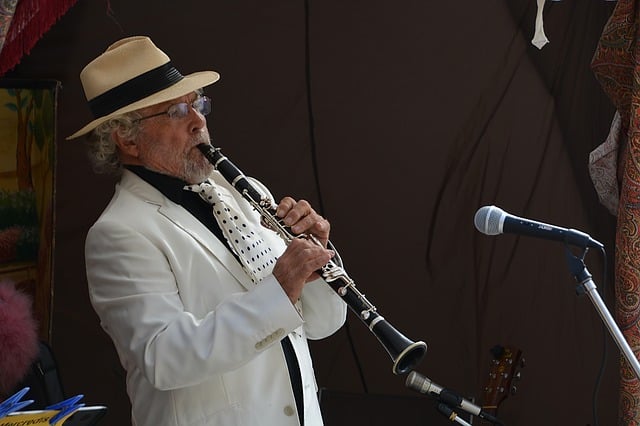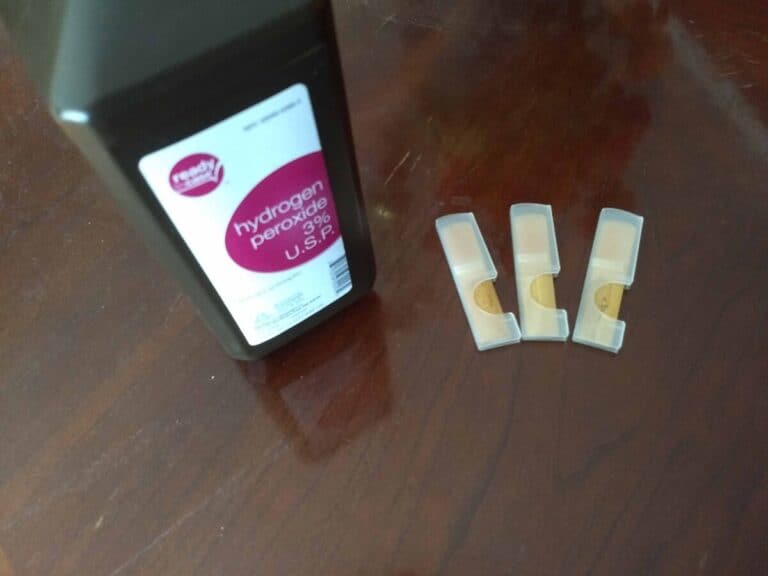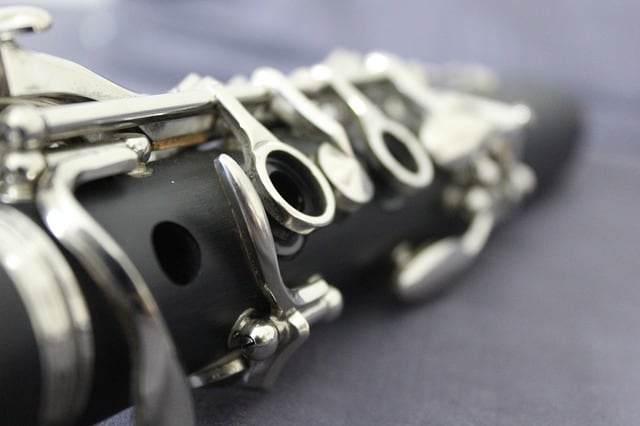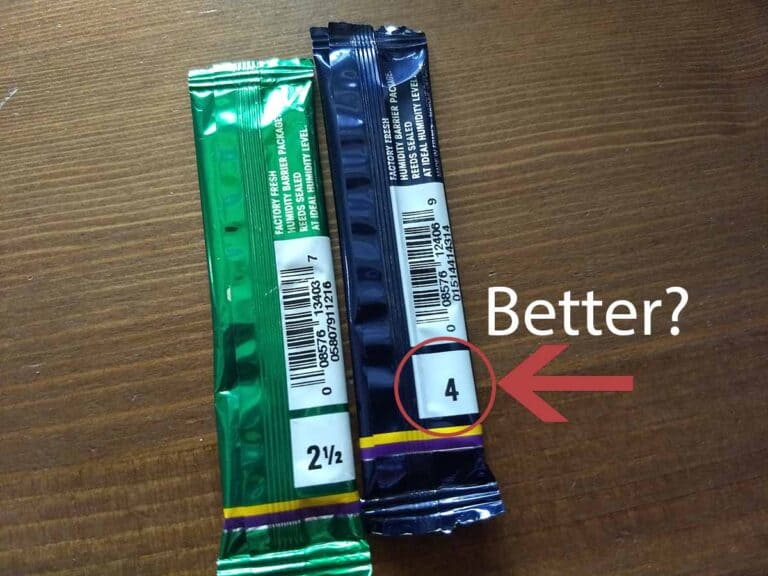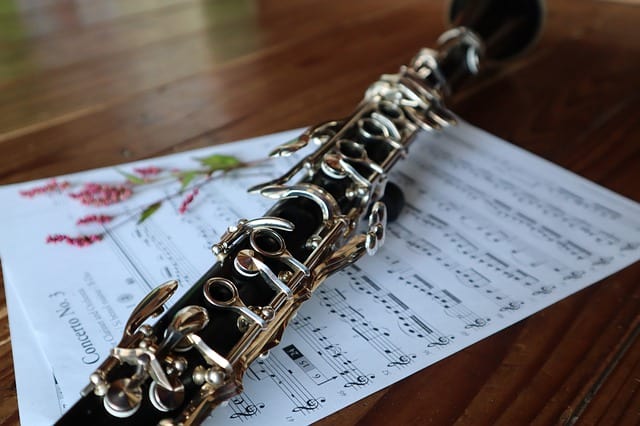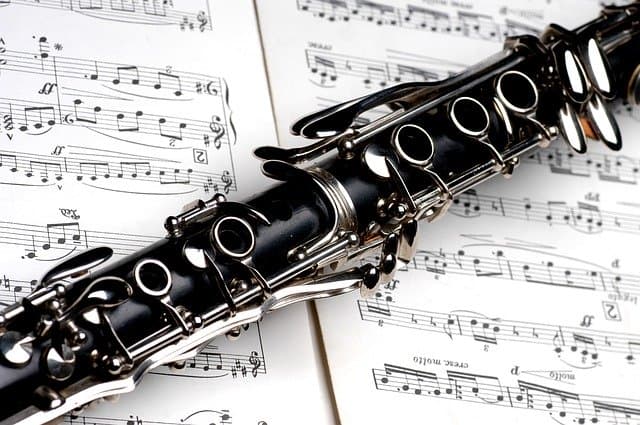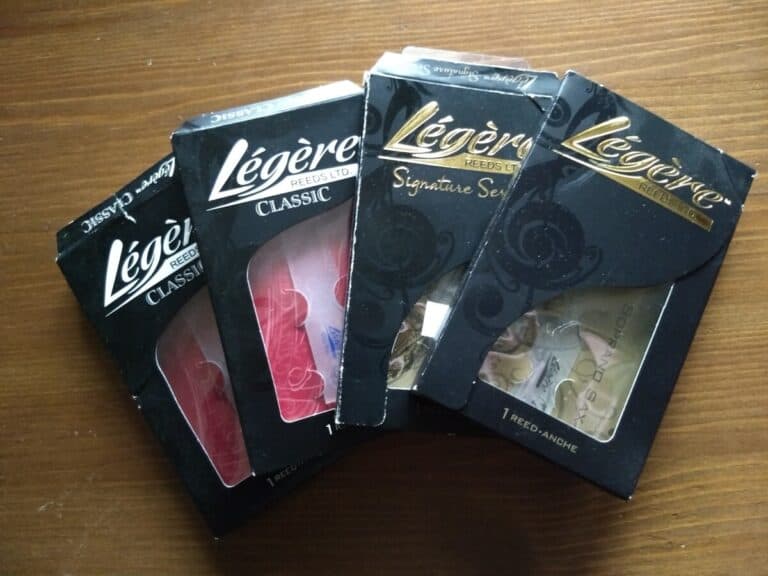Why Do Clarinets Squeak?
Squeaks are, without a doubt, one of the most frustrating and confusing issues that can occur in woodwind instruments. Not only are they loud, but they can occur spontaneously and may be particularly difficult to diagnose. As squeaks can be particularly common on the clarinet, my goal is to help clarinetists overcome this particular difficulty. So, why do clarinets squeak?
The cause of a squeaky clarinet sound is most often due to biting (that is, pinching the reed against the mouthpiece). Beginners will sometimes use a pinched embouchure which results in a squeaky sound. Alternatively, if the squeaks are isolated occurrences, then the cause might be due to the player accidentally pressing a throat tone key, not fully covering the tone holes, or a dry/warped reed.
There are various causes of squeaking other than these. We’re going to go through each of the causes individually to help you better diagnose clarinet squeaks and ultimately fix them for good.
If your sound is consistently squeaky
These tips are intended to diagnose and solve squeakiness that occurs consistently. Sometimes, even clarinetists who otherwise have a wonderful sound will squeak every once in a while. These tips are not for the clarinetist who sometimes sounds wonderful while also sometimes sounding squeaky, but rather for the clarinetist whose sound is most often characteristically squeaky.
Cause #1: Biting
In many cases, squeaks on the clarinet are caused by excess jaw pressure, pinching the reed and resulting in a squeak.
Although proper clarinet embouchure is known to be somewhat more firm than that of other woodwind instruments, be sure to take care not to make your embouchure so tight that you are pinching the reed.
If you are experiencing squeaks due to pinching the reed, make sure that you know exactly what proper clarinet embouchure entails. Wrap the inner lip lining of your lower lip around your teeth, and put your upper teeth directly on the mouthpiece. Then, pull the corners of your mouth diagonally up and outward. This should create an airtight seal without putting too much pressure on the reed.
To check this, try forming your best clarinet embouchure (with the clarinet in your mouth) while looking in a mirror. Lightly wiggle the clarinet back and forth. It shouldn’t move very much, but it also shouldn’t be completely clamped.
The key to eliminating a squeaky sound starts with proper embouchure. If you are confident that you can eliminate this as a cause of your squeaky sound, then move on to the other causes.
Cause #2: Too much or too little mouthpiece in the mouth
This goes back to embouchure. In general, you want about 1/4th inch (just over half a centimeter) of the mouthpiece to be put in your mouth when you play. If you put in more than that, you may sound somewhat honky and overblown (a “squawk” sound).
If you take in less than a quarter inch of the mouthpiece, then your tone will sound shallow, colorless, and squeaky. It is best to experiment with taking in different amounts of the mouthpiece in order to find the sweet spot.
Cause #3: Angle of the clarinet is too horizontal
In general, the clarinet should go into your mouth at a 35 degree (though it can vary somewhat) angle. The idea is to blow air against the reed, not directly into it (unless you are playing the saxophone or a double-reed instrument).
Holding the clarinet too far from your body will effectively force you to bite, and will cause you to produce the squeaky kind of sound that is characteristic of excess jaw pressure.
Cause #4 Weak airstream
Although this is one of the less-likely causes of a squeaky sound, it is still important to pay attention to. Many beginning players do not use enough air support to push the air through the entirety of the instrument.
If you think you might have a weak airstream, the solution is to do breathing exercises. The key to breathing exercises is to get accustomed to taking in more air than you are used to, and exhaling more fully than you are used to. For the clarinet, a strong and consistent stream of air is needed.
While breathing, it is important to focus on breathing from the diaphragm. This is the area in the stomach. One common mistake is breathing from the chest area. This results in a shallow breath which lacks the air support required for the clarinet. If you aren’t sure what breathing from the diaphragm feels like, try lying down and just breathe normally. While lying down, most people naturally breathe from their diaphragm. This is the way that you should breath while playing the clarinet.
As for a breathing exercise, try the following:
- Fully inhale for 4 counts (where one count = about one second), fully exhale for 4 counts
- In for 4 counts, out for 8 counts
- In for 2, out for 8
- In for 2 out for 10
- In 1 out 6
- In 1 out 8
- In 1 out 12
If you do this breathing exercise on a regular basis, you may find that you strengthen breath support enough to at least partially eliminate the squeaky sound.
Cause #5: Dry, warped, or chipped reeds
A bad reed will often produce a squeaky sound. If a reed is chipped or very old (brown-colored), then it is best to throw it away and replace it.
It may not be immediately obvious that a chipped reed is problematic. At first, the reed may seem to play fine. However, your tone will become harsher and less stable, and you may find yourself much more likely to squeak.
If the squeaks only occur occasionally
If you sound fine on the clarinet most of the time but squeak on occasion, then these tips may help you clean that up.
Case #1: Pressing a throat tone key by accident
The most likely cause of occasional squeaking is due to accidentally pressing a throat tone key. These include all the keys closest to the mouthpiece of the instrument (Ab, A-natural, and Bb), and are the easiest to press by accident.
As you play, be sure to pay careful attention to the position of your left hand. Awareness by itself may help you become less prone to accidentally press down keys.
Many people have a tendency to accidentally press a throat tone key while moving between two specific notes. Which notes are problematic tends to vary by individual musician.
One way to resolve this issue is to slowly practice alternating between the two problematic notes. Most commonly, problems occur while going over the break. This involves going from B-natural to Bb, and vice-versa. To work this out, you might try moving slowly from Bb to B-natural, and focus some practice time specifically on that to train your muscle memory to be comfortable with it.
Case #2: Squeaking on high notes
The most common reasons that people squeak on high notes are actually a combination of biting and poor air support. However, if you have both of those issues taken care of, the issue may instead have to do with throat and tongue position.
In general, the clarinet requires a high placement of the tongue. In other words, the tongue has to be relatively close to the roof of the mouth. With high notes, the exact position of the tongue and throat might be best determined by intuition. Instead of consciously trying to adjust your tongue and throat, try first listening to the pitch that you are trying to play. Make sure that you are capable of singing the pitch before you try to play it. Then, let intuition guide your tongue and throat. Generally, as the pitch goes higher, your tongue and throat also must be placed higher.
Furthermore, while throat and tongue position might need to change for high notes, embouchure needs to remain consistent. Many beginners will try altering their embouchure as they play high notes, which may result in biting (and all the issues associated with biting).
That being said, it is better to first focus on making sure that you aren’t biting and that you are using proper air support. Those issues are usually responsible for squeaking on high notes, while tongue and throat position are usually secondary causes.
Case #3: Squeaking on long C# (or other long notes)
Squeaking on long C# can happen frequently, as playing it requires one pad to close while another one opens. The way to work on this is similar to the way I recommend practicing over the break. Try playing along a small portion of the chromatic scale, ascending (B – C – C# – D – D#) and then descending (D# – D – C# – C – B), and repeat. If you consistently set aside time to practice playing long C# in context without squeaking, then you will hopefully find that the squeaking is eventually resolved.
In general, it is common to squeak during incidences where the clarinetist presses down multiple keys at the same time. If you don’t press the keys down firmly enough, or otherwise fail to press them down at the same time, you might squeak. Focusing specifically on leaps that involve pressing down multiple keys at the same time may help you improve in this respect.
Case #4: Squeaking while articulating
Notice how often you squeak while slurring compared to while tonguing. If you squeak specifically while tonguing, then you might have an issue with the way that you are articulating.
First, notice that the tongue and the airstream are separate entities which do separate things. The airstream is constant; while the tongue is sometimes said to be “surfing” on the airstream. In other words, don’t let anything that you do with your tongue affect your airstream. The tongue should lightly touch the reed at the start of a new note, but it shouldn’t stop your airflow. It should feel as if you are saying the syllable “too” or “tee” (while avoiding the syllable “tah”, which tends to be associated with a lower tongue position).
You should take care to avoid heavy tonging, which is often the cause of squeaking. Also, take care to ensure that your embouchure does not change as you are tonguing, which may also affect your sound.
Case #5: Water in a tone hole
It might not be easy to determine whether or not there is water in a tone hole, but you may notice squeaks when using a fingering which requires the tone hole with water in it. Typically, you might come to the conclusion that a tone hole has water in it by eliminating all the other cases, and by paying attention to when and under what circumstances the squeaks occur.
You can clear out the water fairly easily with a tissue. If you don’t have a tissue, you can blow a fast stream of air into the tone hole, which should clear out the water.
Case #6: Faulty equipment
Sometimes, the problem simply has to do with the clarinet itself. If you have a cracked mouthpiece, or if any of the pads on your clarinet are damaged, then you might run into squeaks that have nothing to do with the way you are playing.
This is the most difficult issue to diagnose, and as such can usually only be determined through process of elimination. If you suspect your clarinet might be damaged, your best bet is to find a reputable repair person who specializes in the clarinet.

